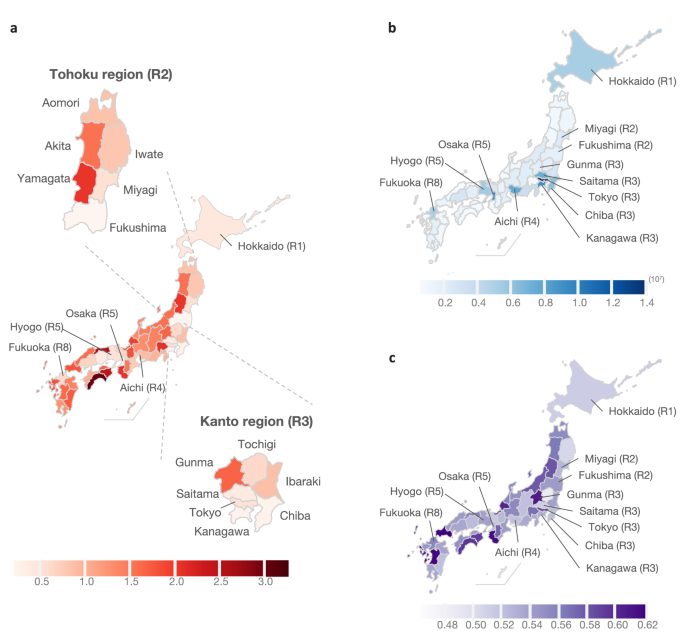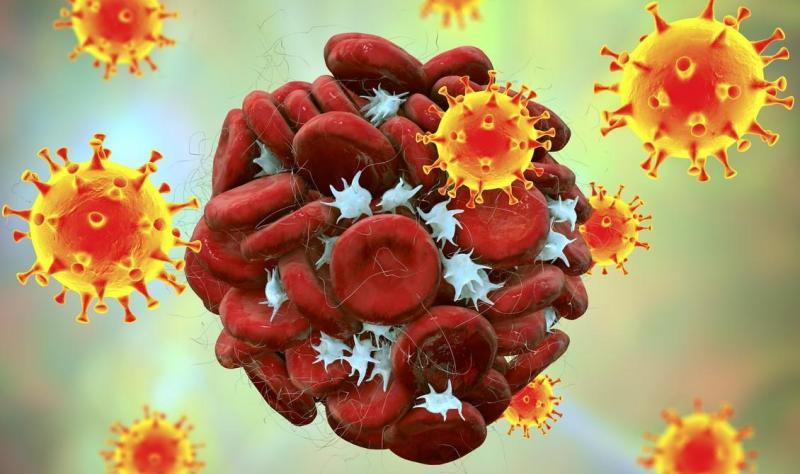Measuring concerns about the COVID-19 vaccine among Japanese internet users through search queries | Scientific Reports


Analysis of queries
Identifying the user’s intentions and interests through their search queries would be effective in providing more relevant results to the user10. We initially assumed that people who search for “vaccine appointment” or “vaccination appointment” demonstrated proactiveness in their attitudes towards vaccination. For these users, prioritizing information on vaccination venues and reservations as search results may have been facilitated through their use of internet search engines. On the other hand, we assumed that “adverse vaccine reactions” would likely be searched by people who were skeptical about vaccine. Yet, when we examined the correlation between VCI and vaccination rate11, as shown in Fig. 1a,c, we found a significant positive correlation between the VCI-based prefecture rank and the vaccination rate-based prefecture rank (Spearman’s (rho) = 0.60, (p < 0.001)): the higher the VCI, the higher the vaccination rate (as of August 31, 2021). This suggests that prefectures with higher concerns towards vaccinations and adverse reactions, were also more likely to have higher vaccination rates.
One possible interpretation of these findings could be that people who seek information about adverse reactions may be hesitant of getting vaccinated, but hesitancy does not mean that these users have decided to not get vaccinated: rather, searches for “adverse vaccine reactions” could be part of the individual’s information gathering process before deciding on accepting or avoiding vaccination. If so, perhaps providing users with appropriate information (as opposed to misinformation) about adverse reactions can help to guide these decision making processes in a constructive manner, which may eventually result in greater vaccine acceptance across the society. Such an interpretation would be consistent with psychological research on persuasion12, particularly through the central (elaborative) route, by providing individuals with sufficient accurate information for decision making. In this sense, the VCI might be highlighting instances of serious deliberation by people who intend to get vaccinated or who have just been vaccinated, and may be searching for adverse reactions after vaccination. Conversely, individuals opposed towards vaccination for moral or political reasons may largely be unconcerned about adverse reactions, and future research may focus on these terms as queries in understanding vaccine hesitancy.
As such, the relative placement of adverse vaccine reactions queries against vaccine appointment queries, might represent the cognitive deliberation above and beyond a baseline attitude towards vaccination, that is represented by appointment queries: an individual that might seek an appointment may search for vaccinations one or twice in booking an appointment, but an individual that is concerned and deliberating getting vaccination may be searching for adverse side effects repeatedly until reaching a satisfactory conclusion (or until the adverse reactions subside post-vaccination).
Analysis of VCI results by prefectures
By and large, prefectures with lower VCI tended to have a relatively smaller elderly population and a larger young people population. Saitama in the Kanto region (R3), which has the sixth lowest VCI as shown in Table 1 and the fifth largest population, conducted online surveys on attitudes toward COVID-19 vaccination among young people aged 18–39 years in August 202113. 70.3% of respondents answered either “vaccinated at least once”, “will definitely get vaccinated”, or “will probably get vaccinated”, suggesting that residents in that prefecture had positive attitude toward vaccination. The survey in Saitama was conducted over the same time period that our selected search queries were actually searched on the web, and we found consistent results, in that young people appear less concerned with vaccinations than the other age groups. This may help contextualize our results, as other low VCI prefectures also tend to have large populations and high percentages of young people. It could be that these younger individuals may not be as concerned about the side effects of the vaccine, and are thus less resistant towards vaccinations.
On the other hand, Fukushima in the Tohoku region (R2) has the lowest VCI even though it has a smaller population than other prefectures as shown in Fig. 1a,b. In Fukushima, the number of infections recorded was high in early August 2021, and in response, priority measures to prevent the spread of the disease was declared. Priority measures to prevent the spread of the disease is legal measures issued by the government for specific areas to prevent the spread of disease before a state of emergency is declared. In more populated prefectures such as Kanagawa and Chiba, where the VCI is low, a state of emergency had already been declared. Despite not being a highly populated prefecture, the government’s declaration following the other highly populated prefectures may have influenced people’s attitudes toward COVID-19 and vaccination.
In contrast, Gunma is the only prefecture in the Kanto region (R3) with a VCI higher than 1. This indicates that the use of vaccine appointment queries is lower in Gunma than in other prefectures in the Kanto region and that vaccination is not actively searched. The Kanto region is the most populated region in Japan, with the population of four prefectures of Tokyo, Kanagawa, Saitama, and Chiba accounting for 30% of the Japanese population (Fig. 1a,b). Compared to these prefectures, Gunma has a small population. However, VCI is less than 1 in Tochigi, which has a similar population as Gunma. This suggests that there would be some trends other than the population that are unique to Gunma.
Analysis of VCI results by age and gender
Our results show that female users have higher VCI than male users, especially those in their 20s to 40s. Okubo et al. conducted a survey to examine the proportion of COVID-19 vaccine hesitancy and factors associated with vaccine hesitancy in Japan6. In their survey, 26,000 people from all prefectures in Japan participated in an online survey conducted in February 2021. Results show that the proportion of vaccine hesitancy is particularly high among young people, females, and those living alone. Despite the timing difference, our results show a similar trend to the Okubo et al.’s survey, in that we found that females aged 15–39 years formed the highest proportion of users that avoided vaccination. One reasons for these results could be the spread of misinformation on the Internet that vaccination causes infertility14,15. The Japanese Society of Obstetrics and Gynecology recommends vaccination, but says more information needs to be collected on medium- and long-term safety16. Females who are exposed to this information are more likely to be cautious about receiving vaccination, which is reflected in the survey results.
The VCI is below zero for users over 60 years old, indicating the percentage of searches with adverse vaccine reactions queries was lower than in other age groups. This is unsurprising, given that adults over 65 years of age have higher rates of severe disease and mortality with COVID-19 infection17,18. Accordingly, vaccination for people over 65 years of age was prioritized, and vaccinations began in April 2021 in Japan. Okubo et al.’s study also found that the proportion of vaccine hesitancy was more than twice as high among younger people aged 15–39 years than among elderly people aged 65–79 years. There are several possible reasons for lower concerns towards vaccination amongst the elderly. For example, studies on the safety and efficacy of the COVID-19 vaccine reported that elderly people are less likely to have adverse reactions than younger people19,20. This result could be a consequence of our choice of “adverse vaccine reactions”. Alternatively, elderly users may not be accustomed to searching for terms and queries on topics that concern them.
Cultural antecedents of vaccine concern
As a collectivistic, Confucian culture, Japanese often have an interdependent view of self21, meaning that one’s personal liberties are given lower priorities than actions that benefit society. In this regard, vaccination is seen as a prosocial activity ‘for the greater good’22, and guidelines issued by authoritative figures (e.g., medical professionals, government), on policies like vaccination, becomes a social norm that is widely followed. Accordingly, concerns over vaccine acceptance lean towards a practical nature, such as considerations over side effects and physical risk, and less of an moral or ideological stance (as in individualistic cultures like the USA). Our study is thus consistent in that VCI is able to quantify these practical considerations in Japanese individuals’ decision processes. Given that such ‘greater good’ arguments are common to collectivistic, Confucian cultures in East Asia (e.g., China, South Korea), the VCI may thus be adaptable to these comparable cultural contexts for infodemiological measurement of vaccine concern and hesitancy.



